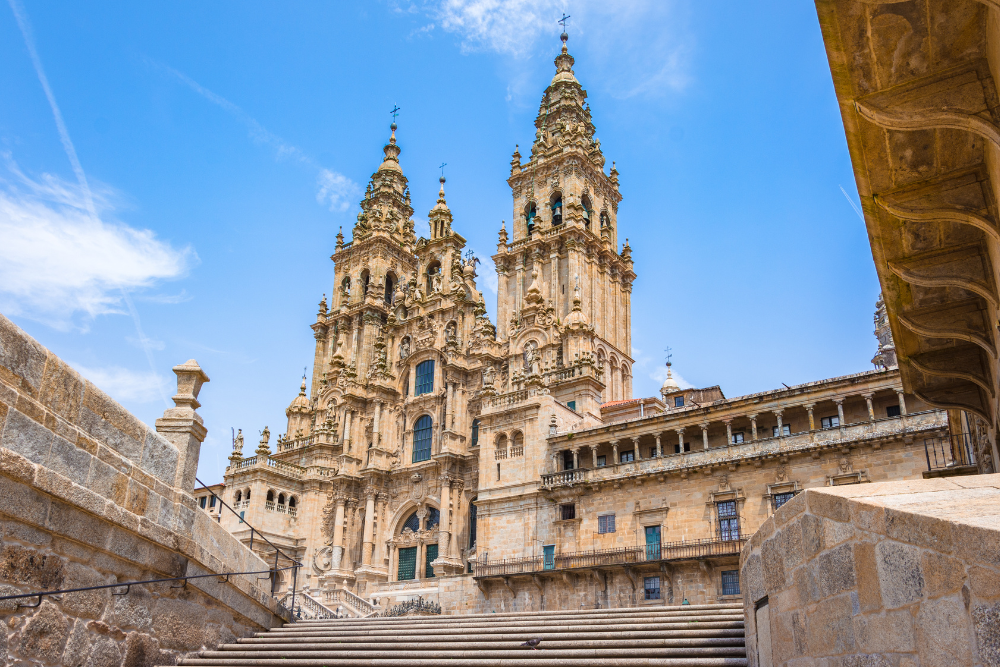Santiago de Compostela, the capital of Spain’s Galicia region, is one of the world’s most renowned pilgrimage destinations. Known as the culmination of the Camino de Santiago (Way of St. James), this historic city draws visitors from across the globe seeking spiritual enrichment, cultural discovery, and breathtaking landscapes. Here’s an in-depth look at embarking on a pilgrimage to Santiago de Compostela.
1. The Camino de Santiago: A Journey of a Lifetime
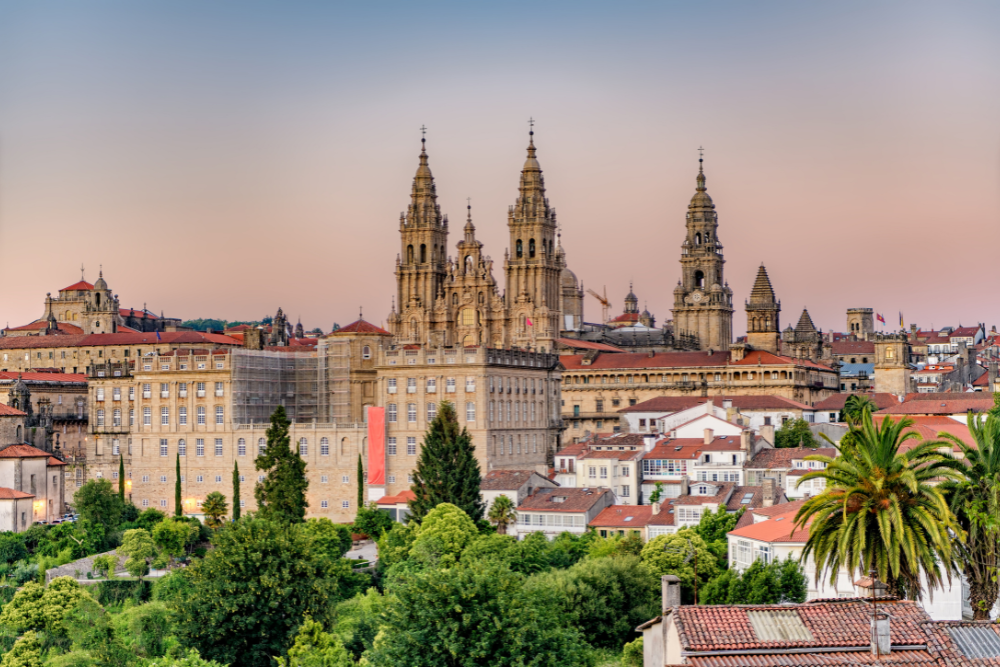
The Camino de Santiago is more than a trek; it’s a transformative experience for many who undertake it.
- Routes to Choose:
- Camino Francés: The most popular route, starting in Saint-Jean-Pied-de-Port, France, and spanning approximately 800 kilometers.
- Camino Portugués: Originating in Lisbon or Porto, this route offers scenic coastal views.
- Camino Primitivo: The oldest and most challenging route, starting in Oviedo.
- What to Expect:
- Stunning landscapes, from mountains to vineyards.
- Encounters with fellow pilgrims from diverse cultures.
- Historical landmarks, chapels, and villages along the way.
2. Exploring Santiago de Compostela
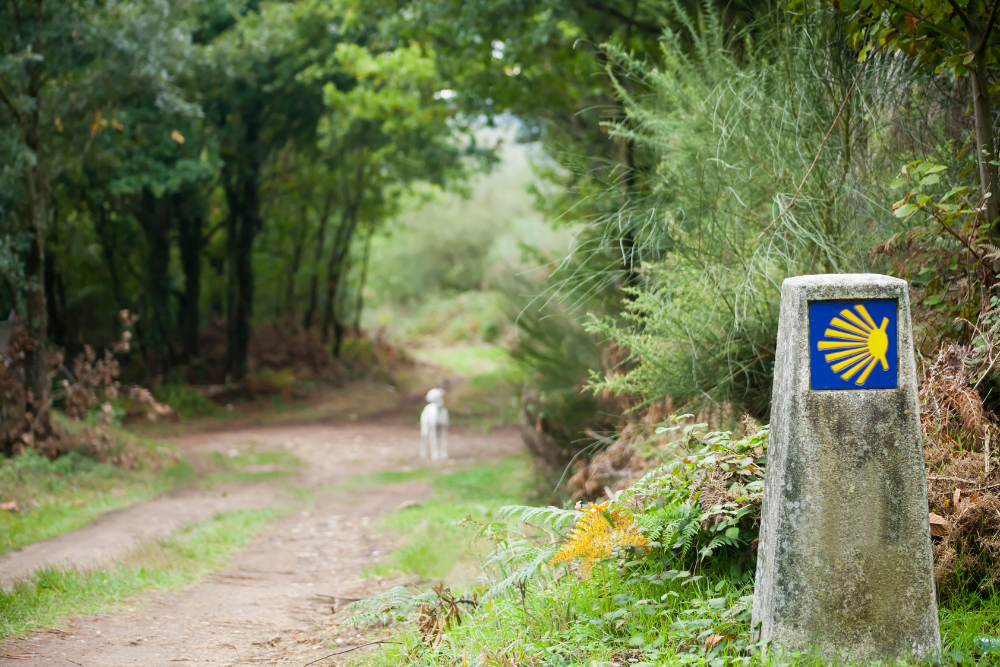
Upon reaching Santiago, pilgrims are greeted by the city’s vibrant mix of history, spirituality, and Galician culture.
- Cathedral of Santiago de Compostela:
- A masterpiece of Romanesque, Gothic, and Baroque architecture, this cathedral houses the relics of St. James.
- Witness the Botafumeiro, a massive incense burner swung during special masses.
- Praza do Obradoiro:
- The central square, where pilgrims gather to celebrate the end of their journey.
- Pilgrim’s Office:
- Obtain the Compostela certificate upon completing at least 100 kilometers on foot or 200 kilometers by bike.
3. Cultural and Culinary Highlights
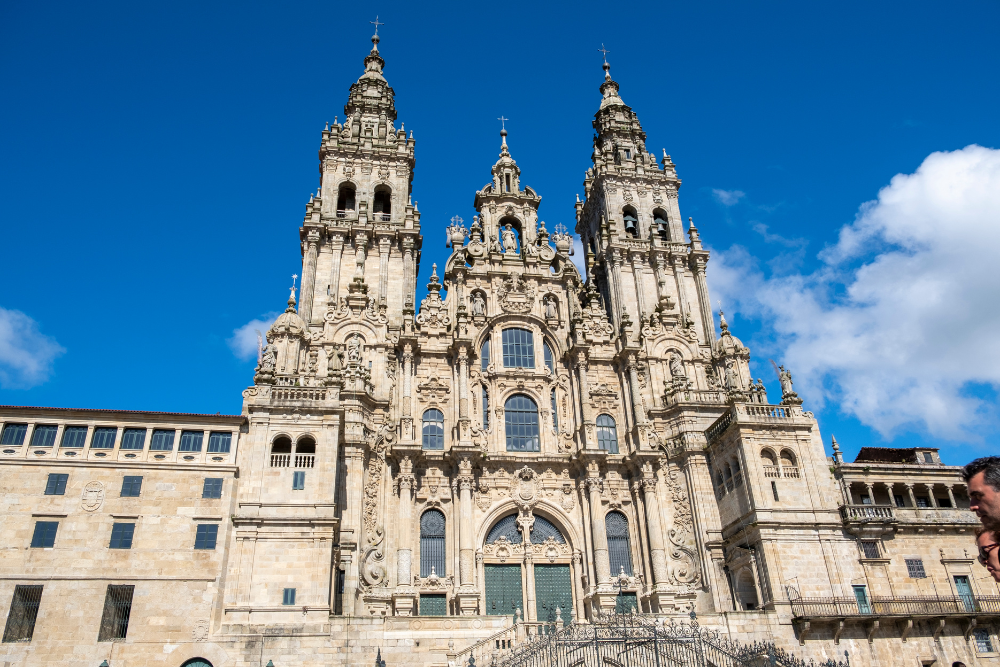
Santiago de Compostela is a feast for the senses, offering rich traditions and delicious Galician cuisine.
- Local Dishes:
- Pulpo a la Gallega: Tender octopus seasoned with paprika, olive oil, and salt.
- Tarta de Santiago: A signature almond cake adorned with the cross of St. James.
- Seafood: Indulge in fresh seafood from the nearby Atlantic coast.
- Markets and Cafés:
- Visit Mercado de Abastos to sample local produce and delicacies.
- Enjoy a cup of Galician wine or coffee in the city’s atmospheric cafés.
4. Spiritual and Personal Reflections
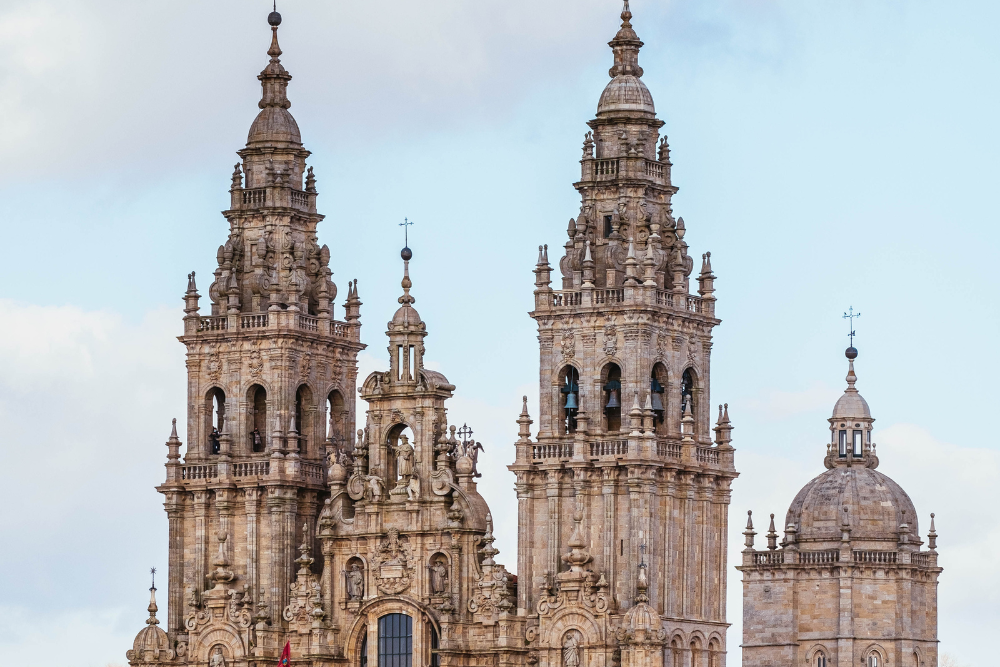
For many, the pilgrimage is as much about inner growth as it is about reaching a destination.
- Meditative Walks:
- The repetitive rhythm of walking offers time for reflection and clarity.
- Community and Connection:
- Share stories and build friendships with fellow pilgrims along the route.
- Sense of Accomplishment:
- Completing the Camino instills a profound sense of achievement and purpose.
5. Practical Tips for Pilgrims
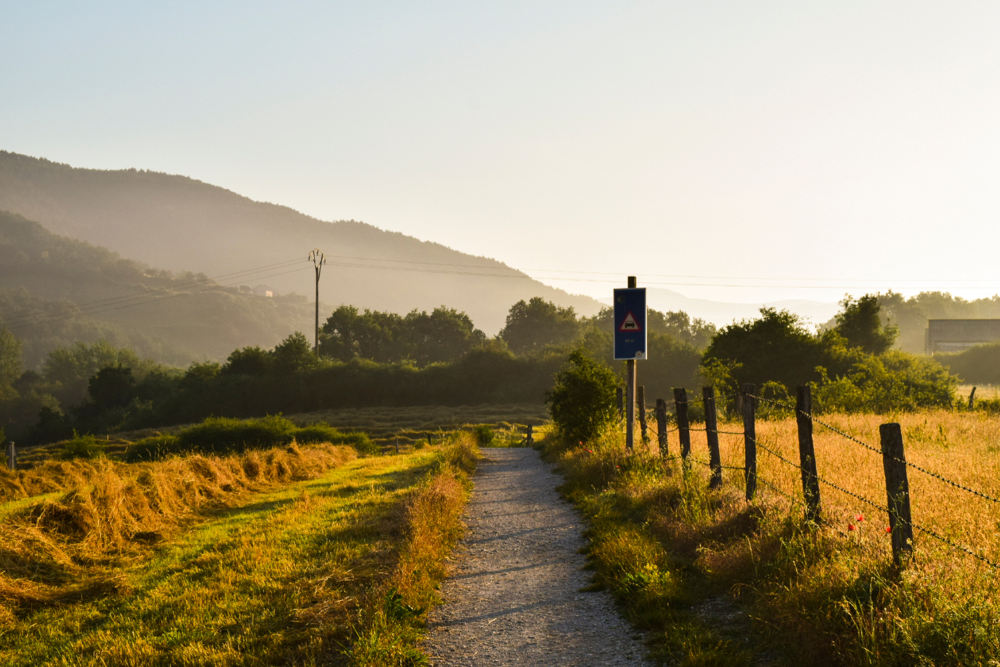
Preparation is key to making the most of your pilgrimage.
- Packing Essentials:
- Comfortable walking shoes, a lightweight backpack, and weather-appropriate clothing.
- A pilgrim’s passport (credencial) to collect stamps along the way.
- Health and Safety:
- Stay hydrated, pace yourself, and take breaks to avoid injuries.
- Accommodation:
- Stay in albergues (pilgrim hostels) for an authentic experience.
Conclusion
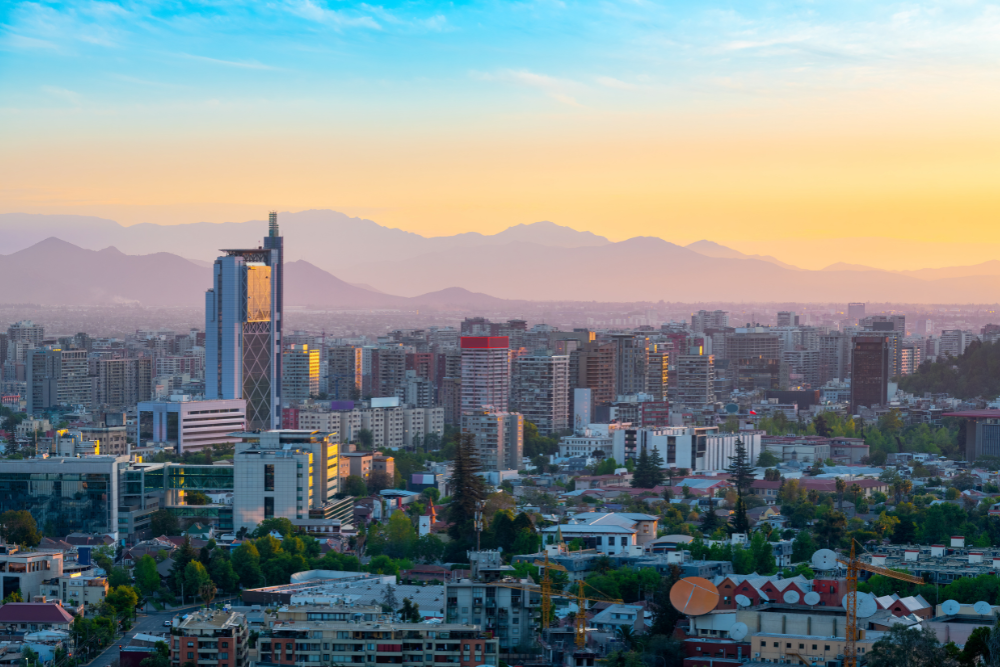
A pilgrimage to Santiago de Compostela is a journey that leaves an indelible mark on the heart and soul. Whether you walk for spiritual reasons, personal growth, or the love of adventure, the Camino de Santiago offers a unique opportunity to connect with history, nature, and fellow travelers. As you stand before the grand cathedral in Santiago, you’ll find that the journey is as meaningful as the destination itself.



